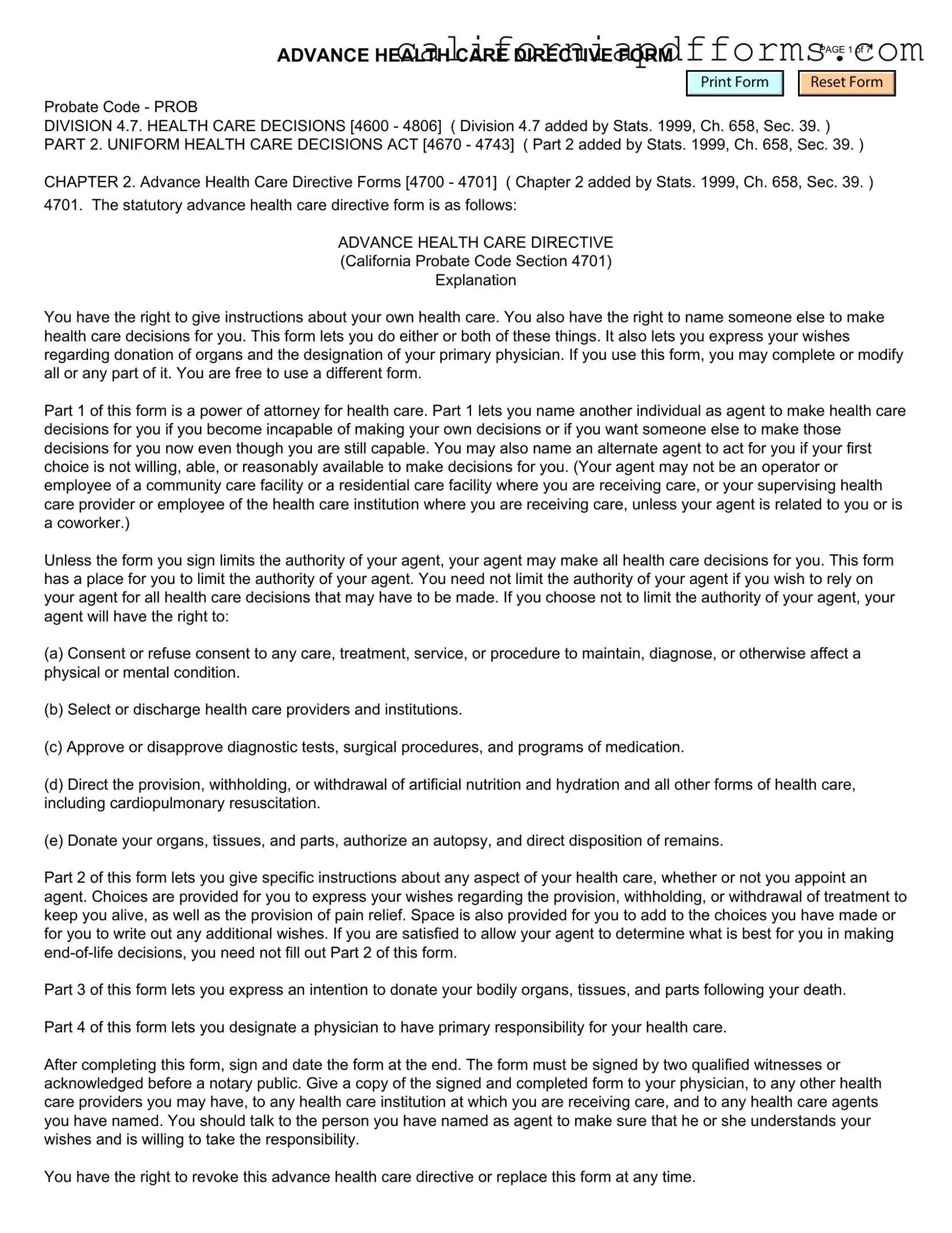What is a California Advanced Health Care Directive?
A California Advanced Health Care Directive is a legal document that allows individuals to outline their healthcare preferences in case they become unable to communicate those wishes themselves. This directive combines two important functions: it designates a healthcare agent to make decisions on your behalf and provides specific instructions regarding your medical care. It is a vital tool for ensuring that your values and preferences are respected in critical situations.
Who can create an Advanced Health Care Directive?
Any adult who is at least 18 years old and of sound mind can create an Advanced Health Care Directive in California. This means you must understand the nature and consequences of your decisions. It is advisable to consult with a healthcare professional or an attorney to ensure that your directive accurately reflects your wishes and complies with state laws.
What should I include in my Advanced Health Care Directive?
Your Advanced Health Care Directive should include the following key components:
-
Appointment of a healthcare agent:
Choose someone you trust to make medical decisions on your behalf.
-
Specific medical preferences:
Clearly state your wishes regarding life-sustaining treatments, pain management, and other medical interventions.
-
End-of-life care:
Indicate your preferences for end-of-life care, including whether you want to receive hospice care or be resuscitated in case of cardiac arrest.
Be as specific as possible to avoid any confusion or misinterpretation of your wishes.
Do I need a lawyer to complete an Advanced Health Care Directive?
No, you do not need a lawyer to complete a California Advanced Health Care Directive. The form can be filled out on your own, but it is highly recommended to seek legal advice to ensure that your directive is valid and comprehensive. Having a lawyer can help clarify any complex issues and provide peace of mind that your document will be honored when needed.
How do I make my Advanced Health Care Directive legally binding?
To make your Advanced Health Care Directive legally binding in California, you must sign the document in the presence of either:
-
Two witnesses who are not related to you and do not stand to inherit from your estate, or
-
A notary public.
Once signed and witnessed or notarized, your directive is considered valid and enforceable. Keep copies of the document in accessible locations and share them with your healthcare agent, family members, and healthcare providers.
Can I change or revoke my Advanced Health Care Directive?
Yes, you can change or revoke your Advanced Health Care Directive at any time, as long as you are of sound mind. To revoke the directive, simply destroy the original document and notify your healthcare agent and any relevant medical personnel. If you wish to make changes, you should create a new directive that clearly states the modifications. It is crucial to ensure that everyone who has a copy of your previous directive is informed of the changes.
